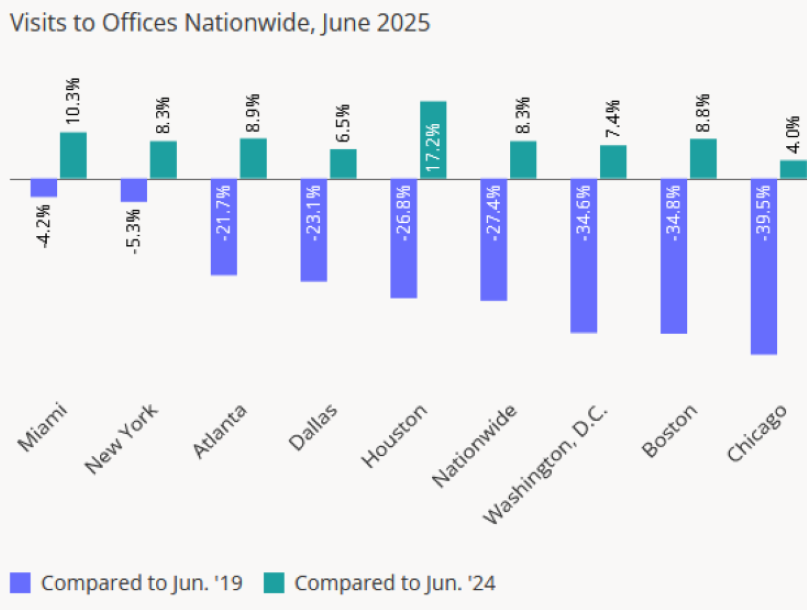Distressed Debt & Asset Update: Is CMBS Here to Stay?
CMBS debt represented more than one-third of total outstanding commercial real estate debt at the height of the market in the mid-2000s, and is once again being looked upon as a potential solution to help solve existing distressed-asset issues and manage significant looming debt maturities.
By Steven Bandolik and Scott Hileman
CMBS debt represented more than one-third of total outstanding commercial real estate debt at the height of the market in the mid-2000s, according to Emerging Trends in Real Estate. CMBS was the most impacted financing source during the recent recession, with new issuance dropping to near zero in 2009, “Commercial Mortgage Alert” reported. However, after a slow rebound over the past two years, CMBS debt is once again being looked upon as a potential solution to help solve existing distressed-asset issues and manage significant looming debt maturities.
The CMBS market was developed in the early 1990s from a need to improve liquidity and create a secondary investment market for commercial real estate. But it was not until the early 2000s that it really took off, as a result of a sustained robust transaction market and favorable fi scal policies. Over a seven-year period starting in 2001, CMBS issuance averaged $126 billion annually, with peak issuance occurring in 2007 at nearly $230 billion, according to “Commercial Mortgage Alert” figures.
During this time frame, CMBS became a key source of debt for borrowers requiring small to midsize loans, ranging from $2 million to $20 million, most typically on commodity properties located in suburban and secondary or tertiary markets. These loans comprise a significant share of the $1.8 trillion in commercial real estate debt that Trepp L.L.C. estimates is scheduled to mature between 2012 and 2016. Trepp further estimates that as much as 60 percent of these maturing loans are currently “impaired,” indicating the amount of debt may exceed the market value of the collateral and thus require some sort of restructure at maturity.
Following a trend that began in the second half of 2010, CMBS lending grew strongly in the first half of 2011, with more than $15.5 billion worth of new issuance, “Commercial Mortgage Alert” reported. Approximately 25 loan conduit programs were up and operating by mid-year.
With competition for loans increasing, there were some concerns that CMBS underwriting standards had begun to slip. Special servicers began moving beyond just loan extensions to more meaningful and complex restructures requiring additional borrower equity. Citigroup Global Markets estimates that about $10 billion in CMBS loans were modified in 2011, while $14 billion were liquidated, with the latter total enhanced by several large portfolio liquidations. The average loss severity on the loan liquidations was 51 percent—or slightly higher than the prior year.
By mid-year 2011, the first signs of hiccups began appearing in the CMBS market, due to such external factors as an uncertain economic outlook, unresolved domestic debt-ceiling issues, the subsequent U.S. debt downgrade, European sovereign debt concerns, general geopolitical unrest and natural disasters. Spreads on new loans widened significantly, which caused CMBS lenders to become increasingly non-competitive with their balance-sheet counterparts. Several loan conduit programs either shut down or pared back staff significantly in the latter half of the year, and for the first time ever, a CMBS deal that priced in July 2011 failed to close after the ratings were pulled. The deal closed 60 days later at significantly wider spreads, “Commercial Mortgage Alert” reported.
Creating additional uncertainty were proposed regulatory and accounting changes, including provisions under the Dodd-Frank Act (risk retention rules) and SFAS 166/167 (elimination of qualifying special-purpose entities) that ultimately may lead to increased costs for CMBS securitizers and lower yields for investors. Similarly, the future implementation of the Basel 2.5 and 3.0 frameworks is expected to impact the treatment of securitization exposures and potentially lessen investor incentives.
Slightly less than $33 billion worth of new issuance was reported during 2011, including the first floating-rate deals as well as the reemergence of single- and multi-borrower deals. Even so, CMBS issuance was one-third lower than the average projected in a “Commercial Mortgage Alert” survey at the beginning of the year. Structures with simpler and wider capital stacks and the re-introduction of a super-senior class of bonds with enhanced subordination levels helped attract new investors, though.
For existing deals, Citigroup Global Markets reported that overall CMBS delinquency rates stabilized at slightly less than 10 percent during the year, although performance varied across property types. Multifamily, retail and hotel properties generally showed modest improvement, while office and industrial weakened slightly. At the same time, Citigroup reported modest returns on CMBS triple-A and investment-grade bond investments of 5.7 and 5.9 percent, respectively, after returns on both fluctuated widely during the year.
Although CMBS issuance in 2011 was more than double the prior-year volume, following the considerable slowdown in new deals in the second half, the outlook for 2012 remains choppy. Any significant borrower demand is likely to be offset by continuing competition for loans from portfolio lenders, a possible projected flattening of growth in property fundamentals and ongoing uncertainty around proposed regulatory changes. However, the overriding need to restructure and refinance existing distressed assets coupled with the significant levels of commercial real estate debt scheduled to mature over the next five years is expected to result in CMBS continuing to play an important role in addressing commercial property financing needs going forward.
Steven Bandolik and Scott Hileman are directors for Deloitte Financial Advisory Services L.L.P. This article contains general information only and is based on the experiences and research of the authors. Deloitte Financial Advisory Services L.L.P. and Deloitte & Touche L.L.P. are not, by means of this article, rendering professional advice or services.






